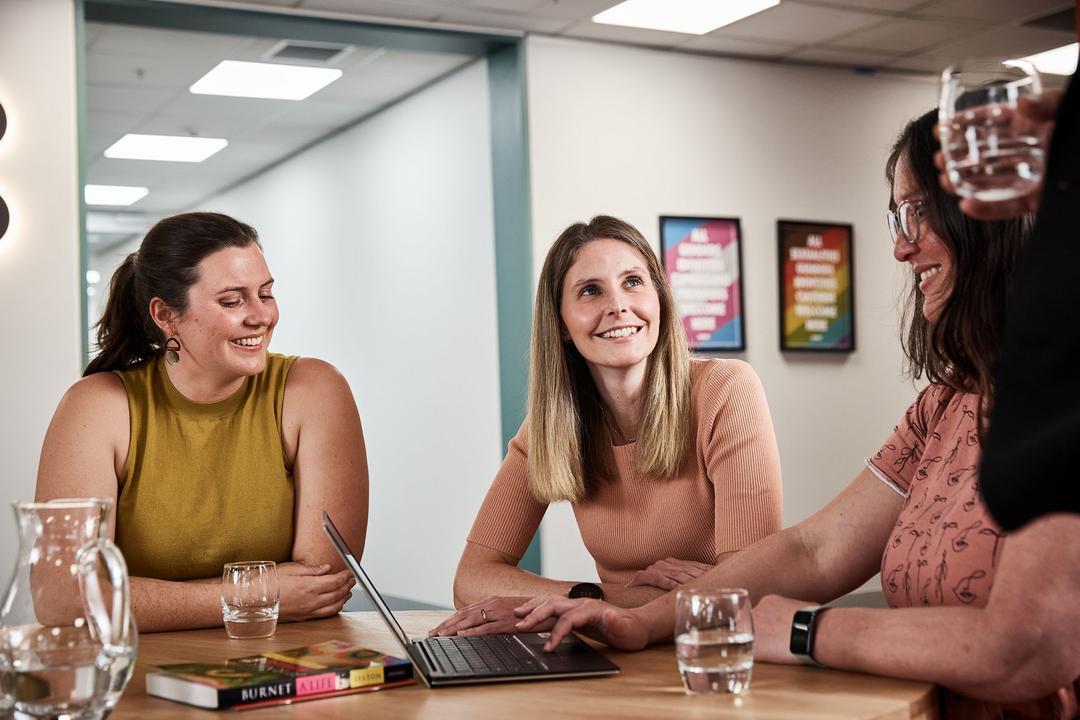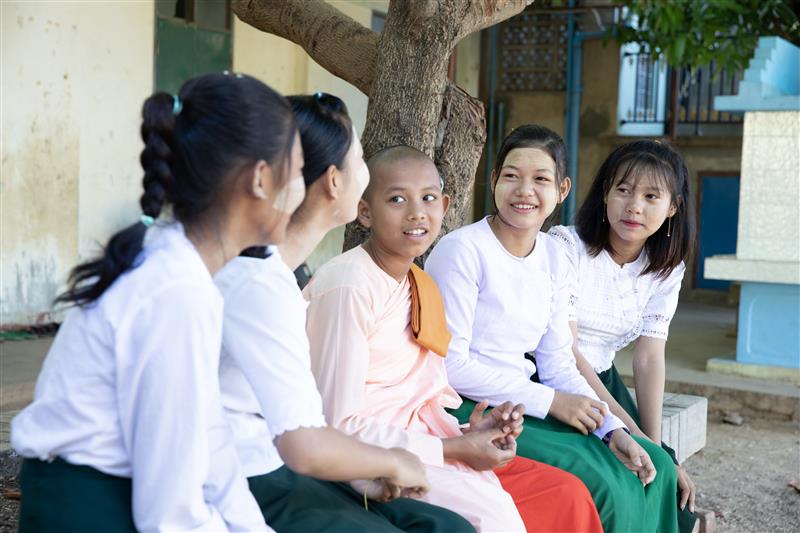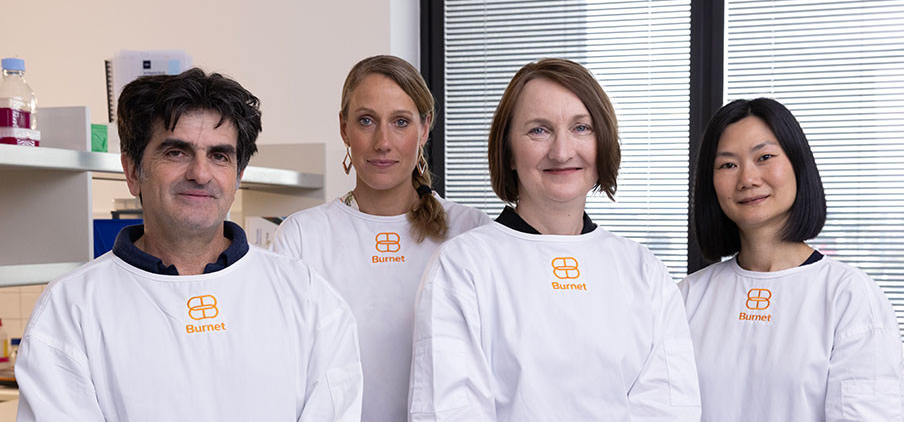
Women's and children's health
Women and children have unique health needs that are too often neglected. Whether it’s maternal and child health, menstrual health or infectious disease, these challenges drive some of the biggest global inequities in health today. Uplifting the wellbeing of women and children can help us build resilient networks of care and healthier communities. At Burnet, we're working to improve women's and children's health in Australia and around the world.
Challenges in women's and children's health
Women’s and children's needs have been historically neglected in research. This has led to incomplete knowledge, gender bias and unequal health outcomes. Many of these disparities can be reduced through more inclusive research and equitable healthcare access.
Our work aims to address challenges such as:
- pregnancy-related complications and preterm birth
- postpartum complications
- under-nutrition for mothers and babies
- lack of access to lifesaving childhood vaccines
- midwife and health worker shortages
- parent-to-child transmission of HIV, syphilis and hepatitis B
- lack of investment in menstrual health
- mental illness and challenges to mental health
- discrimination and social and structural violence.
Stories
View 53 more
New Burnet funding for early-career research projects
Two exciting and diverse projects focused on Adolescent Health, and Women's and Newborns' Health in Lao PDR and the Philippines have been granted funding from Burnet’s Discovery Innovation Fund.

Exploring probiotic use for maternal gut health
A new Burnet study examined how probiotics could potentially treat gut-related conditions in pregnant women.

Midwives: our unrecognised critical first responders
On International Day of the Midwife, we pay tribute to the role of midwives in times of crisis.
How we've made a difference
Burnet has helped lead major progress on women’s and children’s health.
Building global knowledge of maternal and child health
We helped launch the Global Maternal and Newborn Health Platform. As part of this, we're gathering data from more than 90,000 women and their newborns in 74 hospitals. We're building a knowledge base of women's experiences to improve childbirth and newborn care across the globe.
For more than 10 years, we’ve help lead the Healthy Mothers, Healthy Babies program. The program is a wide-ranging set of studies in East New Britain, Papua New Guinea, that explores common issues with maternal and child health as well as strategies to respond. The program addresses health risks like childhood stunting and nutrition, as well as sexually transmitted infections and newborn sepsis.
Informing policies and initiatives in our region
Using biostatistics models, we developed the Optima Nutrition tool. This tool is used by the World Bank, governments and other organisations to analyse how they can efficiently improve childhood nutrition. Our research also informed the United Nations Pacific Regional Roadmap for Triple Elimination.
We've contributed to influential reports around the world, including reports published by the World Health Organization. These include:
- 'State of the world’s midwifery’ report
- ‘Born too soon’ preterm birth report
- ‘Midwives scope of practice’ report.
Developing guidelines for better healthcare
We’ve helped develop international clinical guidelines. This includes research that helped inform the World Health Organization’s guidelines on postpartum haemorrhage.
Developing a new and improved test for syphilis
With commercial and government support, our lab researchers developed a groundbreaking rapid test for syphilis infections. This is the first test on the global market that identifies active syphilis infections compared to past, treated infections.
Prioritising menstrual health
We’ve made menstrual health a priority in our public health work. Menstrual health, or health and wellness related to periods and the menstrual cycle, has been neglected for years. It’s not a hygiene issue—menstrual health is a health and human rights priority. We’ve developed and validated new tools to measure menstrual health experiences. We’re also launched landmark studies on adolescent menstrual health.
Our approaches to women's and children's health
We work directly with women, children and health workers to better understand their needs, and we develop evidence-based interventions to improve maternal and child health. These include education programs, tools, diagnostics and policy guidance. We test these interventions with clinical trials and world-leading studies.
Co-design with communities
People with direct experience often know what they need in order to thrive. We use a ‘co-design’ approach by partnering with local women, health workers and community members. We work with those most affected to ensure that research and interventions are effective.
Training and education across Asia and the Pacific
We support midwifery education and training across the Pacific, including in Solomon Islands and Vanuatu. We also develop workshops and campaigns to increase awareness and delivery of important childhood vaccines. We run leadership training for women, supporting them with skills to advocate for better health in their communities.
Tools for ‘triple elimination’
There are 3 major infections that can pass from parent to infant during pregnancy, childbirth and breastfeeding. These are HIV, syphilis and hepatitis B virus. Efforts to prevent 'mother-to-child transmission' of these infections are called 'triple elimination'. We work with partners to develop toolkits, guidelines and systems that help countries reach their triple elimination goals.
Tests and diagnostics
Our lab researchers are working on new ways to detect or diagnose disease. We're also looking for indicators (biomarkers) that could be linked to vaginal inflammation, HIV, preterm birth and other health risks.
Leading world-first studies for women and children
Through global collaboration, we lead studies that advance our knowledge of women’s and children’s health. This includes world-first studies on:
- maternal sleep position and stillbirth
- adolescent menstrual health
- pre-eclampsia risk-screening and prevention
- new medicines for pregnancy-related conditions
- hepatitis B treatment.
The future of women's and children's health
Hundreds of women continue to die each day from pregnancy or childbirth complications. Many of these deaths are easily preventable. There’s still work to do to scale up our interventions and address barriers to women’s health, maternal health and child health. At Burnet, we’re continuing to explore how aspects of sex and gender impact health and social outcomes among people who face marginalisation and discrimination.
Featured publications
The effects of proton pump inhibitors during pregnancy on treatment of preeclampsia and related outcomes: a systematic review and meta-analysis
American Journal of Obstetrics & Gynecology MFM
Kate Mills et al
Neglected medium-term and long-term consequences of labour and childbirth: a systematic analysis of the burden, recommended practices, and a way forward
The Lancet Global Health
Joshua P. Vogel et al
Antimicrobials for Neonates: Practitioner Decisions and Diagnostic Certainty
The Pediatric Infectious Disease Journal
Naomi Spotswood et al
Community perspectives and experiences of quality maternal and newborn care in East New Britain, Papua New Guinea
BMC Health Services Research
Alyce N. Wilson et al
Low knowledge of newborn danger signs among pregnant women in Papua New Guinea and implications for health seeking behaviour in early infancy – findings from a longitudinal study
BMC Pregnancy and Childbirth
Donya Eghrari et al
Our projects
View 86 moreMaternal Sleep Position and Stillbirth: Formative Research in India
This study seeks to generate evidence on sleep-related behaviours, beliefs, and patterns among women, as well as current antenatal care practices

Triple Elimination Toolkit for Pacific island countries
The Triple Elimination Toolkit project aims to help Pacific island countries meet elimination targets for HIV, syphilis and hepatitis B.

Global maternal and newborn health platform
We're gathering data on the care provided to women as well as asking women about their experiences.
Our working groups



Alcohol and Other Drugs group



Burnet Diagnostics Initiative (BDI)



Global Adolescent Health group



Global Health: Policy, Practice and Community Action group



Global Women's and Newborn's Health group



Immunisation and Health Systems Strengthening group



Justice Health group



Malaria Immunity and Vaccines group



Modelling and Biostatistics group



Pacific Infectious Diseases (Operational Research, Surveillance and Resilience) group




